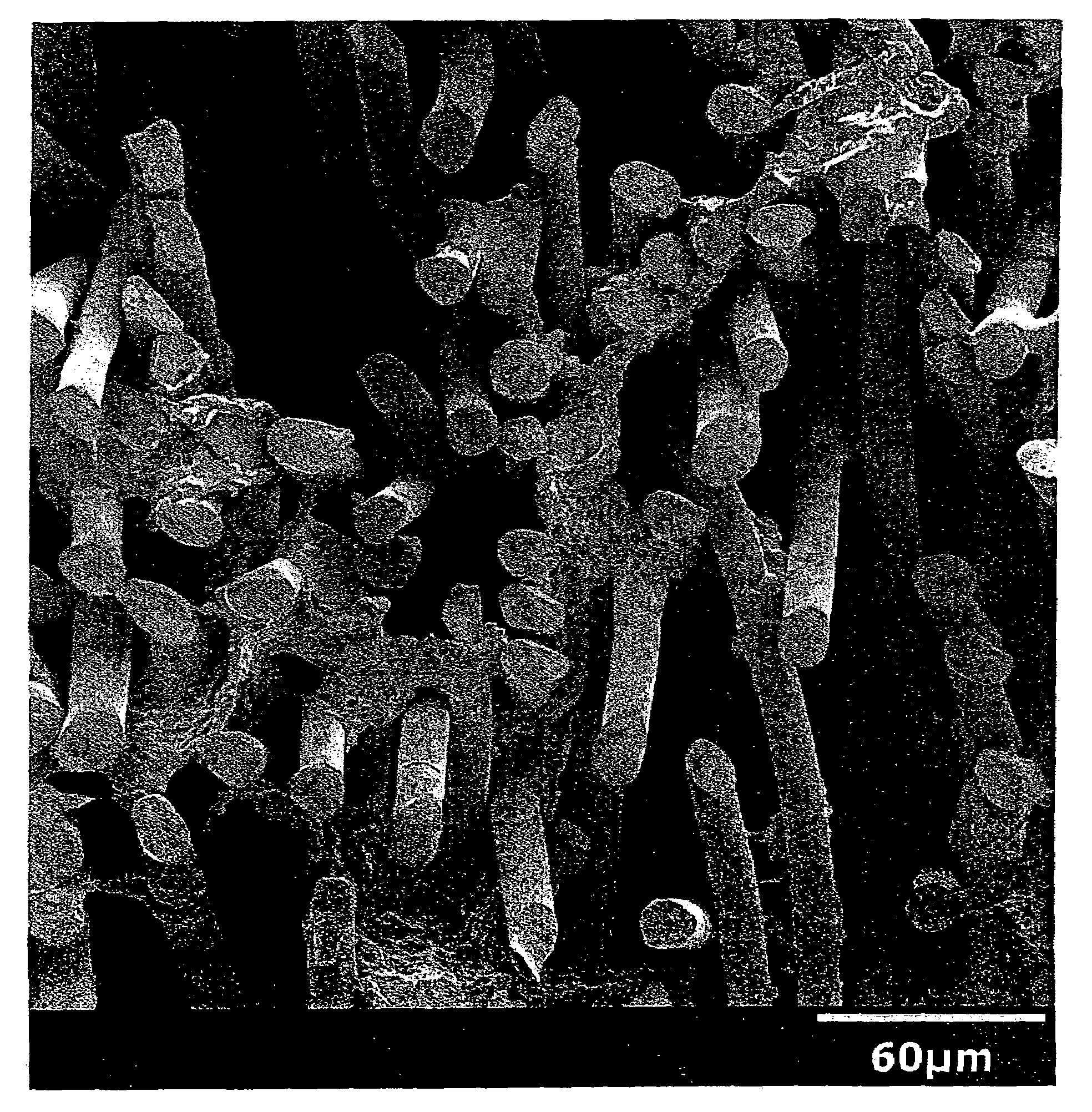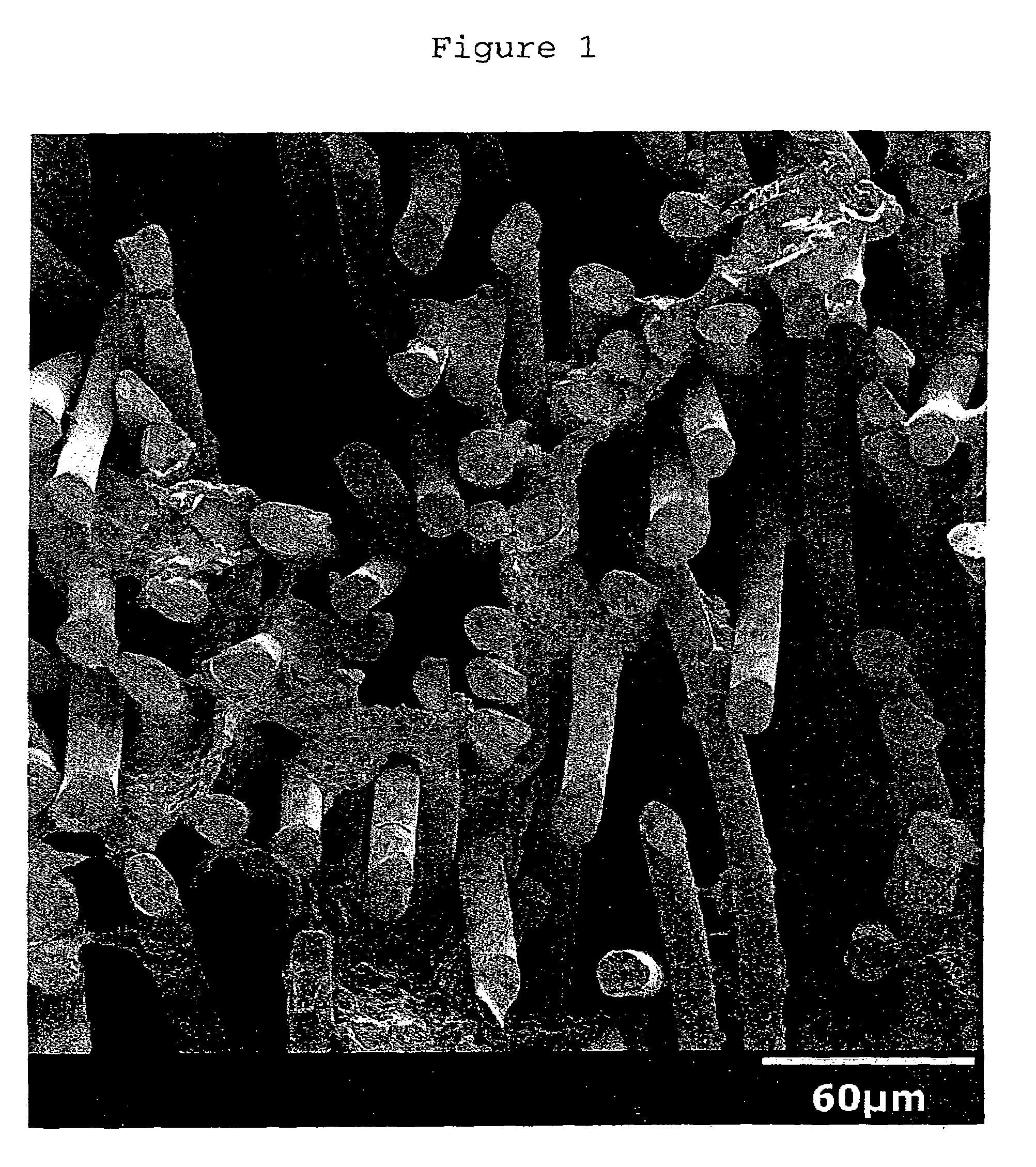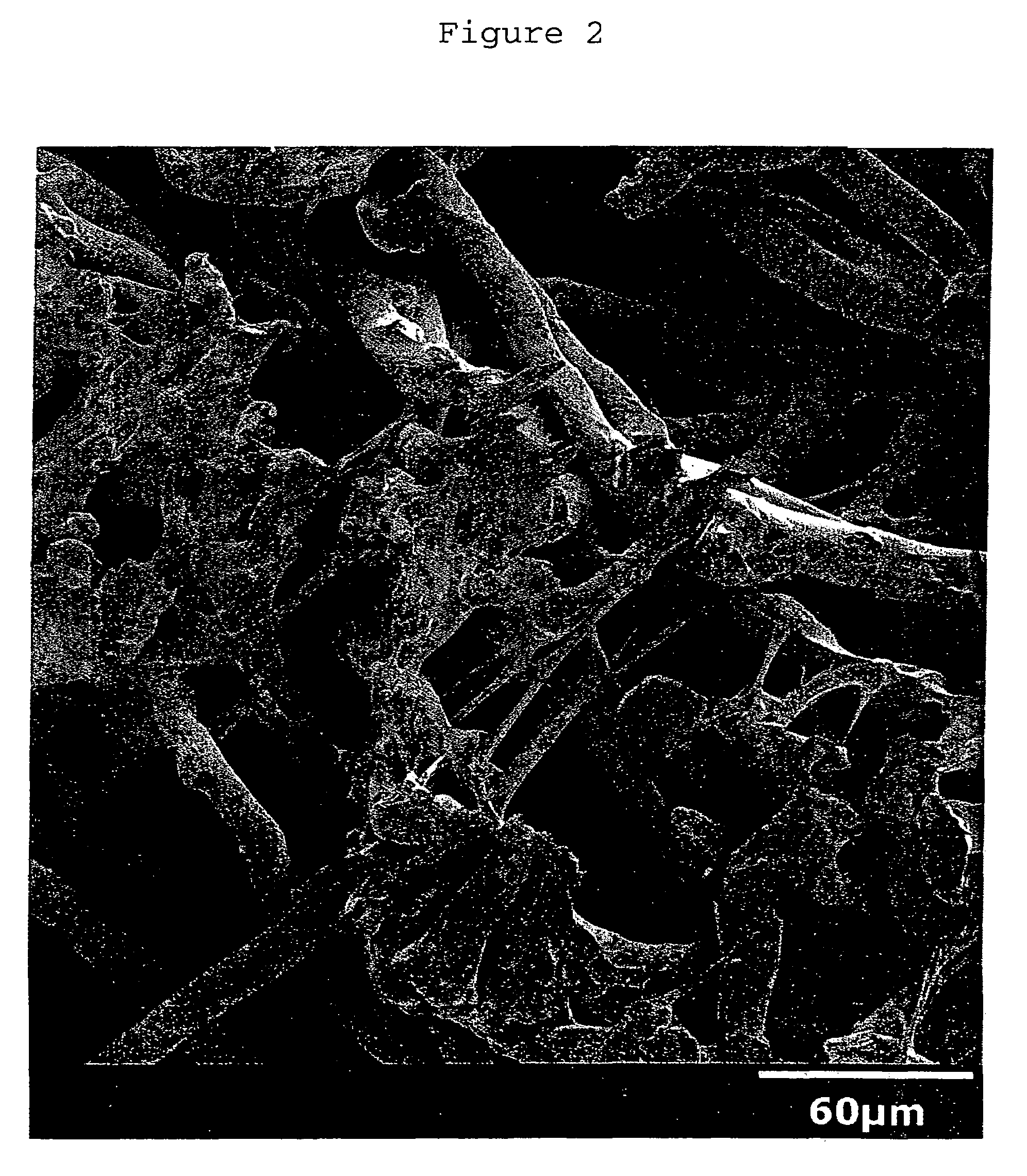Process to make synthetic leather and synthetic leather made therefrom
a technology of synthetic leather and processing method, which is applied in the field of improving the method of making synthetic leather, can solve the problems of excessive amounts of volatile organic solvents, environmental pollution, and expensive recovery systems, and achieves excellent hand and property, non-shiny appearance, and good hand and appearan
- Summary
- Abstract
- Description
- Claims
- Application Information
AI Technical Summary
Benefits of technology
Problems solved by technology
Method used
Image
Examples
example 1
[0081]A nonwoven textile was completely immersed in an aqueous polyurethane dispersion for about 5 seconds, then removed allowing excess liquid to drain out of the immersed textile. The textile was an 80:20 blend of 1.5 denier polyester fiber and 2.0 denier polyamide fiber formed by the needle punch process. The textile had a thickness of about 1 mm and a weight of about 213 g / m2.
[0082]The polyurethane dispersion was an externally stabilized polyurethane dispersion was made by the procedure and materials described in Example 4 of WO 00 / 61651 (U.S. Ser. No. 09 / 548,822) formerly available under the tradename INTACTA 1000 (The Dow Chemical Company, Midland, Mich.) that had been diluted with water to form a dispersion having 10% by weight of polyurethane particles. This aqueous polyurethane dispersion prepared by process essentially free of any solvent. Prior to dilution, the dispersion had a polyurethane solids loading of about 45 percent by weight.
[0083]The diluted dispersion was thic...
example 2
[0086]The same procedure as described in Example 1 was used to form an impregnated synthetic leather, except that a 10% by weight NaCl water solution was used as the coagulating bath and the coagulation time was about 5 minutes.
[0087]The synthetic leather had polyurethane content of about 32.3 g / m2. The synthetic leather had excellent suppleness, softness and hand. The microstructure of this impregnated synthetic leather is shown in FIG. 2.
example 3
[0088]The same procedure as described in Example 1 was used to form an impregnated synthetic leather, except that a 10% by weight NaCl and acetic acid water solution having a pH of about 3.6 was used as the coagulating bath.
[0089]The synthetic leather had polyurethane content of about 32.3 g / m2. The synthetic leather had excellent suppleness, softness and hand. The microstructure of this impregnated synthetic leather is shown in FIG. 3.
PUM
| Property | Measurement | Unit |
|---|---|---|
| Time | aaaaa | aaaaa |
| Percent by mass | aaaaa | aaaaa |
| Weight | aaaaa | aaaaa |
Abstract
Description
Claims
Application Information
 Login to View More
Login to View More - R&D
- Intellectual Property
- Life Sciences
- Materials
- Tech Scout
- Unparalleled Data Quality
- Higher Quality Content
- 60% Fewer Hallucinations
Browse by: Latest US Patents, China's latest patents, Technical Efficacy Thesaurus, Application Domain, Technology Topic, Popular Technical Reports.
© 2025 PatSnap. All rights reserved.Legal|Privacy policy|Modern Slavery Act Transparency Statement|Sitemap|About US| Contact US: help@patsnap.com



